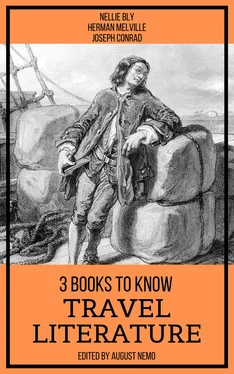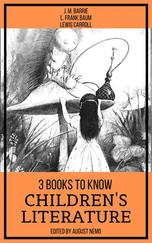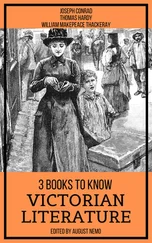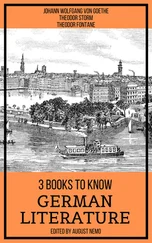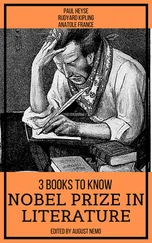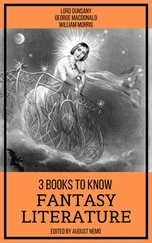“And you?” he asked with a teasing smile. I had been up even longer.
“Well, I confess, I was saying one word for you and two for myself,” I replied, with a laugh that put us at ease on the subject.
“Honestly, now, I care very little for scenery when I am so sleepy,” I said apologetically. “Those English farm houses are charming and the daisy-dotted meadows (I had not the faintest conception as to whether there were daisies in them or not), are only equaled by those I have seen in Kansas, but if you will excuse me?–” and I was in the land that joins the land of death.
I slept an easy, happy sleep, filled with dreams of home until I was waked by the train stopping.
“We change for the boat here,” my companion said catching up our bags and rugs, which he hauled to a porter.
A little walk down to the pier brought us to the place where a boat was waiting. Some people were getting off the boat, but a larger number stood idly about waiting for it to move off.
The air was very cold and chilly, but still I preferred the deck to the close, musty-smelling cabin beneath. Two English women also remained on deck. I was much amused at the conversation they held with some friends who had accompanied them to the boat, and now stood on the wharf. One would have supposed, by hearing the conversation that they had only that instant met and having no time to spend together, were forced to make all further arrangements on the spot.
“You will come over to-morrow, now don’t forget,” the young woman on the boat called out.
“I won’t forget. Are you certain that you have everything with you?” the one on the wharf called back.
“Look after Fido. Give him that compound in the morning if there is no appearance of improvement,” the first one said.
“You will meet me to-morrow?” said number two on shore.
“Oh yes; don’t forget to come,” was the reply, and as the boat moved out they both talked at once until we were quite a distance off, then simultaneously the one turned to her chair and the other turned around and walked rapidly away from the wharf.
There has been so much written and told about the English Channel, that one is inclined to think of it as a stream of horrors. It is also affirmed that even hardy sailors bring up the past when crossing over it, so I naturally felt that my time would come.
All the passengers must have been familiar with the history of the channel, for I saw everyone trying all the known preventives of seasickness. The women assumed reclining positions and the men sought the bar.
I remained on deck and watched the sea-gulls, or what I thought were these useful birds-useful for millinery purposes-and froze my nose. It was bitterly cold, but I found the cold bracing until we anchored at Boulogne, France. Then I had a chill.
At the end of this desolate pier, where boats anchor and where trains start, is a small, dingy restaurant. While a little English sailor, who always dropped his h’s and never forgot his “sir,” took charge of our bags and went to secure accommodations for us in the outgoing train, we followed the other passengers into the restaurant to get something warm to eat.
I was in France now, and I began to wonder now what would have been my fate if I had been alone as I had expected. I knew my companion spoke French, the language that all the people about us were speaking, so I felt perfectly easy on that score as long as he was with me.
We took our places at the table and he began to order in French. The waiter looked blankly at him until, at last, more in a spirit of fun than anything else, I suggested that he give the order in English. The waiter glanced at me with a smile and answered in English.
We traveled from Boulogne to Amiens in a compartment with an English couple and a Frenchman. There was one foot-warmer and the day was cold. We all tried to put our feet on the one foot-warmer and the result was embarrassing. The Frenchman sat facing me and as I was conscious of having tramped on someone’s toes, and as he looked at me angrily all the time above the edge of his newspaper, I had a guilty feeling of knowing whose toes had been tramped on.
During this trip I tried to solve the reason for the popularity of these ancient, incommodious railway carriages. I very shortly decided that while they may be suitable for countries where little traveling is done, they would be thoroughly useless in thinly populated countries where people think less of traveling 3,000 miles than they do about their dinner. I also decided that the reason why we think nothing of starting out on long trips, is because our comfort is so well looked after, that living on a first-class railway train is as comfortable as living at a first-class hotel. The English railway carriages are wretchedly heated. One’s feet will be burning on the foot-warmer while one’s back will be freezing in the cold air above. If one should be taken suddenly ill in an English railway compartment, it would be a very serious matter.
Still, I can picture conditions under which these ancient railway carriages might be agreeable, but they are not such as would induce a traveler to prefer them to those built on the American model.
Supposing one had the measles or a black eye, then a compartment in a railway carriage, made private by a tip to the porter, would be very consoling.
Supposing one was newly wed and was bubbling over in ecstacy of joy, then give one an English railway compartment, where two just made one can be secluded from the eyes of a cold, sneering public, who are just as great fools under the same conditions, although they would deny it if one told them so.
But talk about privacy! If it is privacy the English desire so much, they should adopt our American trains, for there is no privacy like that to be found in a large car filled with strangers. Everybody has, and keeps his own place. There is no sitting for hours, as is often the case in English trains, face to face and knees to knees with a stranger, offensive or otherwise, as he may chance to be.
Then too, did the English railway carriage make me understand why English girls need chaperones. It would make any American woman shudder with all her boasted self-reliance, to think of sending her daughter alone on a trip, even of a few hours’ duration, where there was every possibility that during those hours she would be locked in a compartment with a stranger.
Small wonder the American girl is fearless. She has not been used to so called private compartments in English railway carriages, but to large crowds, and every individual that helps to swell that crowd is to her a protector. When mothers teach their daughters that there is safety in numbers, and that numbers are the body-guard that shield all woman-kind, then chaperones will be a thing of the past, and women will be nobler and better.
As I was pondering over this subject, the train pulled into a station and stopped. My escort looking out, informed me that we were at Amiens. We were securely locked in, however, and began to think that we would be carried past, when my companion managed to get his head out of the window and shouted for the guard to come to our release. Freed at last, we stepped out on the platform at Amiens.
Jules Verne at Home.
––––––––

M. JULES VERNE and Mme. Verne, accompanied by Mr. R. H. Sherard, a Paris journalist, stood on the platform waiting our arrival.
When I saw them I felt as any other woman would have done under the same circumstances. I wondered if my face was travel-stained, and if my hair was tossed. I thought regretfully, had I been traveling on an American train, I should have been able to make my toilet en route, so that when I stepped off at Amiens and faced the famous novelist and his charming wife, I would have been as trim and tidy as I would had I been receiving them in my own home.
Читать дальше
